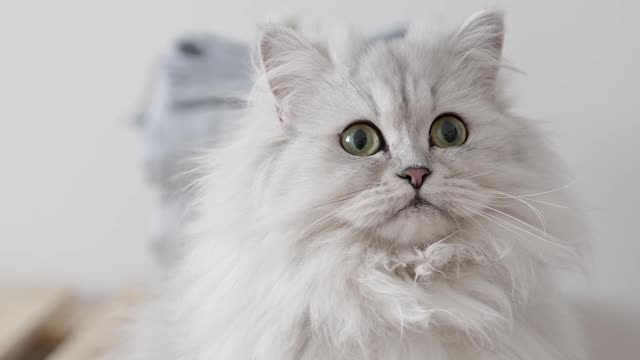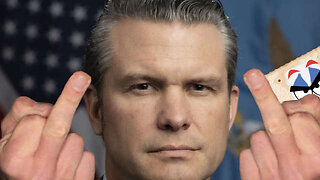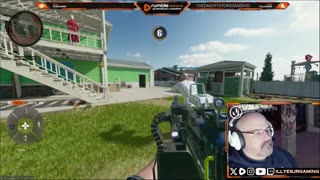Premium Only Content

August 24, 2021
Head: Triangular shape with equal length and width. Flat forehead. Straight nose. The muzzle follows the line of the head; no whisker pinch. Nose of medium length. Strong, square rather than rounded chin; never pointed. Early Forest Cats had longer heads and their profile was not as straight as it is today.
Eyes: Large, almond shaped, and set at a slight angle. Any color is acceptable, but preferred colors are green or gold. White cats may be copper, blue, or odd-eyed.
Neck: Of medium length, muscular.
Body: Massive, robust, with a powerful appearance. Moderately long with a broad, rounded chest. Heavily boned and muscled.
Paw: Medium in length, muscular, and straight, with hind legs longer than the front legs, making the rump higher than the shoulders. Heavily muscled with substantial bone. Large, round paws with long tufts between each toe.
Tail: Of medium length, muscular.
Coat: Double coat. Medium long, with a very thick, wooly undercoat. The smooth, shiny, oily guard hairs are waterproof. The coat is uneven; shorter on the shoulders and becoming progressively longer on the back and flanks. The full ruff is comprised of the back-of the neck ruff, side mutton chops, and a full front bib. All colors permissible, except color point, chocolate, and lilac, cinnamon, fawn, and Burmese patterns. Any amount of white is allowed.
Fault: Undersized, frail cat. Cob by or extremely long body. Round or square head. Nose break. Small ears. Small or round eyes. Delicate bone structure. Dry coat.
-
 5:05
5:05
BigZVideoGames
3 years agoAugust 2021 Pickups #1
35 -
 2:44:05
2:44:05
TheSaltyCracker
6 hours agoDeep State Set Up Trump ReeEEStream Stream 03-26-25
124K237 -
 31:34
31:34
Friday Beers
11 hours ago $2.57 earnedWe Drank 12 Beers and Solved the Case of 9 Dead Hikers
29.2K2 -
 18:11
18:11
Nick Shirley
6 hours ago $4.01 earnedAsking The Irish If They Will Vote for Conor McGregor 🇮🇪
39.5K45 -
 LIVE
LIVE
Illyes Jr Gaming
7 hours agoIt's Wednesday! Let's Hit 300 Followers TONIGHT!
283 watching -
 2:40:58
2:40:58
Joker Effect
4 hours agoIs our government safe?***Streamer News***DRAMA***RUMBLE GETTING LEVERAGE***GAMING
48K3 -
 14:55
14:55
T-SPLY
9 hours agoDemocrats Accused Of Not Calling Out Joe Bidens Security Disasters
35K9 -
 LIVE
LIVE
ZachTheRipper
4 hours agoWe Back With A Passion - 0/20 Subs - Interactive Streamer - #RumbleGaming
151 watching -
 16:19
16:19
Tundra Tactical
8 hours ago $0.99 earnedGEN Z Brit 3D Prints a WORKING Gun!
25.5K8 -
 48:01
48:01
Man in America
12 hours agoWHEN WILL THE ARRESTS BEGIN?! w/ General Michael Flynn
34.8K39